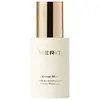What's inside
What's inside
 Key Ingredients
Key Ingredients

 Benefits
Benefits

 Concerns
Concerns

 Ingredients Side-by-side
Ingredients Side-by-side

Water
Skin ConditioningNiacinamide
SmoothingCoco-Caprylate/Caprate
EmollientGlycerin
HumectantCaprylic/Capric Triglyceride
MaskingPanthenol
Skin ConditioningLysolecithin
EmulsifyingSclerotium Gum
Emulsion StabilisingZinc Gluconate
Skin ConditioningBakuchiol
AntimicrobialHydroxyacetophenone
AntioxidantXanthan Gum
EmulsifyingPullulan
1,2-Hexanediol
Skin ConditioningCaprylyl Glycol
EmollientSodium Phytate
Pantolactone
HumectantSilica
AbrasiveWater
Skin ConditioningCoco-Caprylate/Caprate
EmollientDicaprylyl Carbonate
EmollientSimmondsia Chinensis Butter
Skin ConditioningSqualane
EmollientPropanediol
SolventC12-16 Alcohols
EmollientStearic Acid
CleansingGlycerin
HumectantGlyceryl Stearate Citrate
EmollientHaematococcus Pluvialis Extract
AntioxidantAvena Sativa Kernel Extract
AbrasiveSodium Acetylated Hyaluronate
HumectantSclerotium Gum
Emulsion StabilisingPalmitic Acid
EmollientPolyacrylate-13
Hydrogenated Lecithin
Emulsifying1,2-Hexanediol
Skin ConditioningCaprylyl Glycol
EmollientHydroxyacetophenone
AntioxidantHydrogenated Polyisobutene
EmollientLysolecithin
EmulsifyingPolyglyceryl-10 Laurate
Skin ConditioningPullulan
Xanthan Gum
EmulsifyingArginine
MaskingEthylhexyl Palmitate
EmollientSorbitan Isostearate
EmulsifyingSilica
AbrasiveTocopherol
AntioxidantCaramel
Cosmetic ColorantWater, Coco-Caprylate/Caprate, Dicaprylyl Carbonate, Simmondsia Chinensis Butter, Squalane, Propanediol, C12-16 Alcohols, Stearic Acid, Glycerin, Glyceryl Stearate Citrate, Haematococcus Pluvialis Extract, Avena Sativa Kernel Extract, Sodium Acetylated Hyaluronate, Sclerotium Gum, Palmitic Acid, Polyacrylate-13, Hydrogenated Lecithin, 1,2-Hexanediol, Caprylyl Glycol, Hydroxyacetophenone, Hydrogenated Polyisobutene, Lysolecithin, Polyglyceryl-10 Laurate, Pullulan, Xanthan Gum, Arginine, Ethylhexyl Palmitate, Sorbitan Isostearate, Silica, Tocopherol, Caramel
Ingredients Explained
These ingredients are found in both products.
Ingredients higher up in an ingredient list are typically present in a larger amount.
1,2-Hexanediol is a synthetic liquid and another multi-functional powerhouse.
It is a:
- Humectant, drawing moisture into the skin
- Emollient, helping to soften skin
- Solvent, dispersing and stabilizing formulas
- Preservative booster, enhancing the antimicrobial activity of other preservatives
Caprylyl Glycol is a humectant and emollient, meaning it attracts and preserves moisture.
It is a common ingredient in many products, especially those designed to hydrate skin. The primary benefits are retaining moisture, skin softening, and promoting a healthy skin barrier.
Though Caprylyl Glycol is an alcohol derived from fatty acids, it is not the kind that can dry out skin.
This ingredient is also used as a preservative to extend the life of products. It has slight antimicrobial properties.
Learn more about Caprylyl GlycolCoco-Caprylate/Caprate is created from fatty coconut alcohol, caprylic acid, and capric acid.
It is a lightweight emollient. Emollients create a thin barrier on the skin to trap moisture in. This helps keep your skin hydrated and soft.
Once applied, Coco-Caprylate/Caprate is absorbed quickly and leaves a silky feel.
Coco-Caprylate/Caprate may not be fungal acne safe.
Learn more about Coco-Caprylate/CaprateGlycerin is already naturally found in your skin. It helps moisturize and protect your skin.
A study from 2016 found glycerin to be more effective as a humectant than AHAs and hyaluronic acid.
As a humectant, it helps the skin stay hydrated by pulling moisture to your skin. The low molecular weight of glycerin allows it to pull moisture into the deeper layers of your skin.
Hydrated skin improves your skin barrier; Your skin barrier helps protect against irritants and bacteria.
Glycerin has also been found to have antimicrobial and antiviral properties. Due to these properties, glycerin is often used in wound and burn treatments.
In cosmetics, glycerin is usually derived from plants such as soybean or palm. However, it can also be sourced from animals, such as tallow or animal fat.
This ingredient is organic, colorless, odorless, and non-toxic.
Glycerin is the name for this ingredient in American English. British English uses Glycerol/Glycerine.
Learn more about GlycerinHydroxyacetophenone is antioxidant with skin conditioning and soothing properties. It also boosts the efficiency of preservatives.
This ingredient is not irritating or sensitizing.
We don't have a description for Lysolecithin yet.
Pullulan is a low viscosity polysaccharide (a long chain carbohydrate) with binding and film forming properties when dissolved in water. It is used to create a "silicone-like" or silky feel in cosmetics without adding viscosity.
According to a manufacturer, this ingredient's ability to easily dissolves makes it a great carrier for active ingredients.
Due to it being edible and tasteless, you'll likely find this ingredient in breath freshener strips. This ingredient is produced from the starch of the fungus, Aureobasidium pullulans.
Pullulan is stable over a broad-range of pH.
Learn more about PullulanSclerotium Gum is a polysaccharide gum made by the fungus, Sclerotium rolfssii. It is similar to xanthan gum.
In cosmetics, Sclerotium Gum is used to thicken the texture and to help stabilize other ingredients.
As an emulsifier, Sclerotium Gum helps prevent ingredients from separating, such as water and oil.
Learn more about Sclerotium GumSilica, also known as silicon dioxide, is a naturally occurring mineral. It is used as a fine, spherical, and porous powder in cosmetics.
Though it has exfoliant properties, the function of silica varies depending on the product.
The unique structure of silica enhances the spreadability and adds smoothness, making it a great texture enhancer.
It is also used as an active carrier, emulsifier, and mattifier due to its ability to absorb excess oil.
In some products, tiny microneedles called spicules are made from silica or hydrolyzed sponge. When you rub them in, they lightly polish away dead skin layers and enhance the penetration of active ingredients.
Learn more about SilicaWater. It's the most common cosmetic ingredient of all. You'll usually see it at the top of ingredient lists, meaning that it makes up the largest part of the product.
So why is it so popular? Water most often acts as a solvent - this means that it helps dissolve other ingredients into the formulation.
You'll also recognize water as that liquid we all need to stay alive. If you see this, drink a glass of water. Stay hydrated!
Learn more about WaterXanthan gum is used as a stabilizer and thickener within cosmetic products. It helps give products a sticky, thick feeling - preventing them from being too runny.
On the technical side of things, xanthan gum is a polysaccharide - a combination consisting of multiple sugar molecules bonded together.
Xanthan gum is a pretty common and great ingredient. It is a natural, non-toxic, non-irritating ingredient that is also commonly used in food products.
Learn more about Xanthan Gum